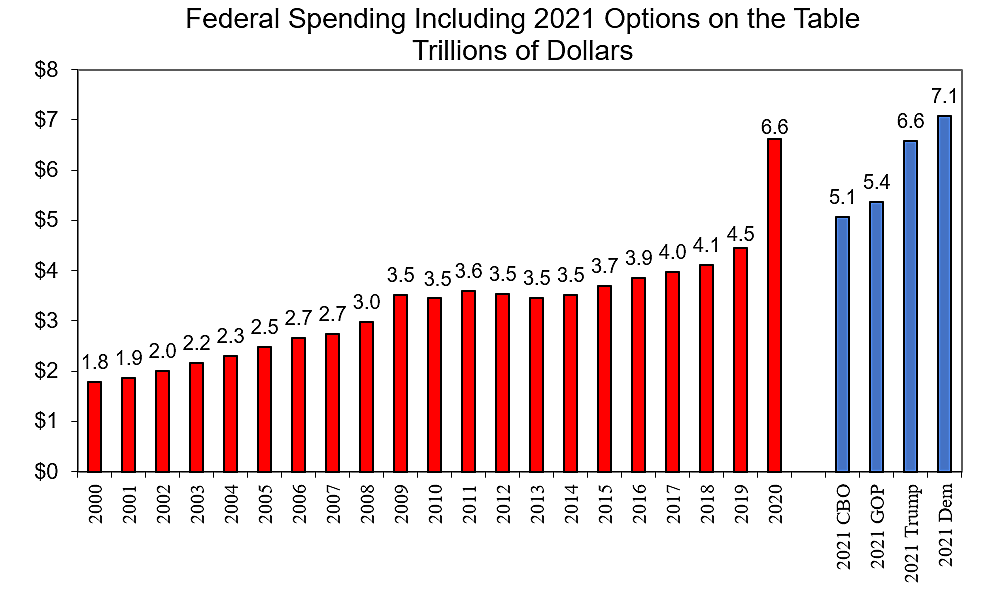The Congressional Budget Office has released new estimates. Federal government spending jumped from $4.5 trillion in fiscal 2019 to $6.6 trillion in fiscal 2020, as shown in the chart below. That huge increase was financed by borrowing, the costs of which will land on taxpayers down the road.
The federal government has grown from a weak shell that struggled to raise cash for the Revolutionary War to today’s powerful machine able to quickly summon an extra $2.1 trillion seemingly out of thin air. Of that, $1.8 trillion was from legislation responding to the health crisis and recession (Table A-2). That is more than $5,400 per person in the nation.
CBO projects baseline outlays in fiscal 2021 to be $5.1 trillion, which includes $307 billion still flowing through the pipes from relief bills already passed.
Policymakers are considering additional relief spending. The House passed a bill in May to spend $3.1 trillion more, but Democratic leaders now say they will accept $2 trillion. If that extra aid passed, fiscal 2021 spending could hit $7.1 trillion, as shown in the chart. However, some of the additional spending would likely slop over into later fiscal years.
Senate Republicans recently supported $300 billion more in relief, which would increase 2021 spending to $5.4 trillion. President Trump said that he favored “something like” $1.5 trillion more, which would increase 2021 spending to $6.6 trillion. If regular 2021 spending is above the CBO baseline, these spending totals would be even higher.
Sadly then, the only options on the table for federal spending are like Starbucks sizes Grande, Venti, and Trenta. If you think those pricey coffees empty your wallet, you ain’t seen nothing yet.

